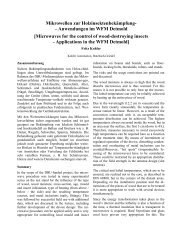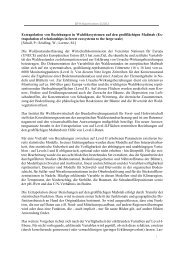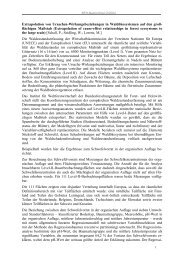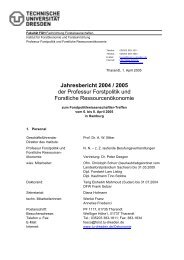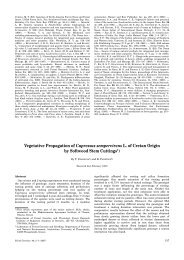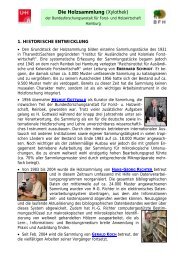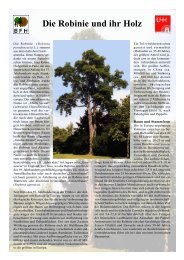kinetic response of thermosetting adhesive systems to heat
kinetic response of thermosetting adhesive systems to heat
kinetic response of thermosetting adhesive systems to heat
Create successful ePaper yourself
Turn your PDF publications into a flip-book with our unique Google optimized e-Paper software.
Exothermic Heat [0,5 W/g]<br />
UF#2<br />
UF#3<br />
UFm#4<br />
UFm#5<br />
30 40 50 60 70 80 90 100 110 120 130 140 150 160 170 180 190<br />
Temperature [°C]<br />
Lab: METTLER<br />
Figure 1 - DSC curves obtained with a 2°K/min <strong>heat</strong>ing rate for samples weighing 10 mg.<br />
The relationship between temperature and the rate at which a first-order reaction proceeds<br />
and temperature is commonly described using the Arrhenius Equation (Eqn. 1):<br />
ln k = ln A – EA/RT (1)<br />
where k is the rate coefficient (kJ/mol), A is the pre-exponential fac<strong>to</strong>r, R is the universal<br />
gas constant (8,314*10 -3 kJ*mol -1 *K -1 ) and T is the absolute temperature (°K).<br />
In the present DSC experiments, activation energy values have been extracted by<br />
analyzing temperature peaks measured for runs conducted using three different <strong>heat</strong>ing rates <strong>of</strong><br />
1°K/min, 2°K/min and 4°K/min following the method <strong>of</strong> Kissinger (Kissinger 1957).<br />
Au<strong>to</strong>mated Bonding Evaluation System (ABES)<br />
The ABES technique may be used <strong>to</strong> characterize the mechanical <strong>response</strong> (bond strength<br />
in this case) <strong>of</strong> <strong>adhesive</strong> <strong>systems</strong> <strong>to</strong> a wide range <strong>of</strong> parameters; the influence <strong>of</strong> temperature was<br />
<strong>of</strong> concern in the present investigation. The test arrangement is shown conceptually as Figure 2<br />
and the bond forming and testing zone <strong>of</strong> the ABES instrument as Figure 3.<br />
Figure 2 - A schematic representation <strong>of</strong> the ABES approach.





